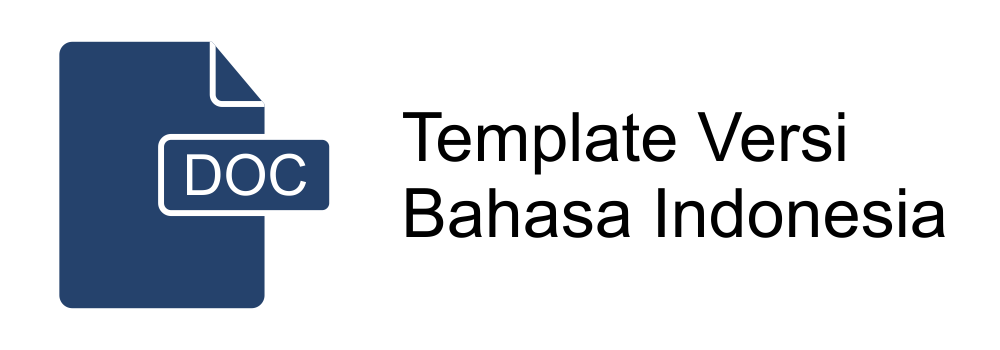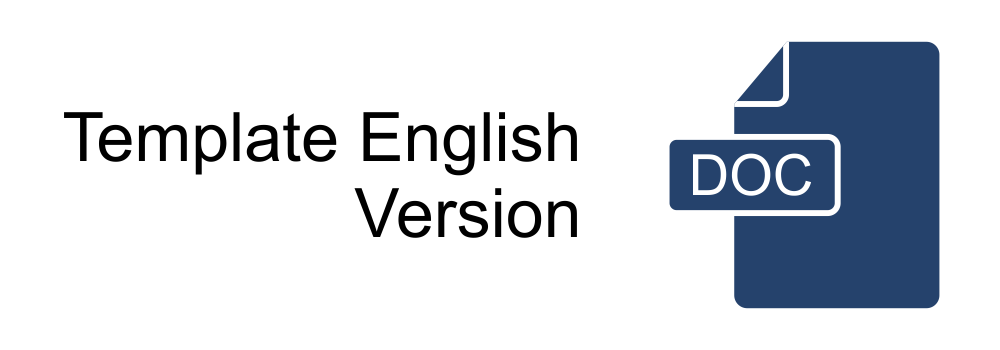Typology of Personal Pronouns in Austronesian Languages in Indonesia
Abstract
This research aims to examine typology of personal pronouns in Austronesian language families in Indonesia with a particular focus on phoneme variation and syntactic patterns. This research takes examples from five regional languages: Bengkulu Malay, Belitung Malay, Pontianak Malay, Rejang, and Lembak. Data collection involved classifying personal pronouns according to the '1/2/3' person system as proposed in Dixon’s theory of personal pronouns. These pronouns were then analyzed within sentence structures to observe their syntactic behavior and then the researcher looked for similarities that characterize the language as an Austronesian family, as well as identifying its distinctiveness. The results of this study show that the five languages studied have similarities that characterize the language as part of the Austronesian family. In addition, there are differences in phonemes that characterize each language. For example, the use of the word “aku” to refer to the first person singular pronoun known in all the languages. However, phonological variations occur, in Rejang, the word “aku” undergoes a phoneme change to “uku”. In syntactic system all the languages studied have a system of Subject, predicate, then object. The findings in this study show phonological and syntactic dynamics that enrich the diversity of the syntax that enriches the linguistic diversity in the Austronesian family in Indonesia. These dynamics are influenced by various factors, such as social, history, and geography.
Keywords
Full Text:
PDFReferences
Anika, Luci, satria, I. et. a. (2022). Jurnal Pustaka Indonesia. Jurnal Pustaka Indonesia (JPI), 2(2), 1–10. https://www.siducat.org/index.php/jpi/article/download/420/318
Chaer, A. (2015). Morfologi Bahasa Indonesia: Pendekatan Proses. PT.Gramedia Pustaka Utama.
Chili, S. (2006). Kamus Rejang-Indonesia. Ikatan Keluarga Besar Jang Pat Petulai Jakarta dan Sekitarnya. https://perpustakaanbadanbahasa.kemdikbud.go.id/slims/index.php?p=show_detail&id=21998&keywords=
DIPSY ID. (2023). Aplikasi Kamus Lembak Bengkulu. DIPSY ID. https://apkpure.net/id/kamus-lembak-bengkulu-smanli/com.app.kamuslembak
Dixon, R. M. . (2010). Basic Linguistik Theory (2nd ed., Vol. 02). Oxford University Press.
Epriani, N. (2021). Perubahan Makna Pada Bahasa Rejang di Desa Ujung Tanjung Dua Kabupaten Lebong [IAIN Bengkulu]. http://repository.iainbengkulu.ac.id/6988/
Fauzi, A. R. (2022). Kamus Bahasa Bengkulu. Kantor Bahasa Bengkulu. https://pustakabahasariau.kemdikbud.go.id/index.php?p=show_detail&id=2197&keywords=
Firdaus, W. (2018). Realisasi Pronomina dalam Bahasa Mooi: Analisis Tipologi Morfologi. Ranah: Jurnal Kajian Bahasa, 7(2), 180. https://doi.org/10.26499/rnh.v7i2.496
Grosz, P. G. (2019). Pronominal typology and reference to the external world. Proceedings of the 22nd Amsterdam Colloquium, AC 2019, 563–573. https://archive.illc.uva.nl/AC/AC2019/uploaded_files/inlineitem/Grosz_Pronominal_typology_and_reference_to_the_exte.pdf
Harimansyah, G., Rivai, O. S., Setiawan, D., Solihah, A., Aritonang, B., Susamto, D. A., & Cesarai, D. L. (2017). Pedoman Konservasi dan Revitalisasi Bahasa. https://repositori.kemdikbud.go.id/17233/1/Pedoman Konservasi dan Revitalisasi Bahasa.pdf
Inayah, Maftukhatul, Sawardi, F.X, S. (2021). Tipologi Bahasa Komering. Prosiding Seminar Nasional Linguistik Dan Sastra (SEMANTIKS) 2021, 387–393. https://jurnal.uns.ac.id/prosidingsemantiks
Irawan, B., & Noviyanto, F. (2013). Aplikasi penerjemah bahasa Indonesia-Rejang dan sebaliknya dengan konversi teks terjemahan menjadi suara (Studi kasus SMP 1 Curup Tengah). Jurnal Sarjana Teknik Informatika, 1(2), 597–606. https://doi.org/http://dx.doi.org/10.12928/jstie.v1i2.2583
Khaliffitriansyah, & Hariyanto Prima. (2019). Kamus Bahasa Melayu Belitung-Indonesia. JBS. https://opac.atmaluhur.ac.id/opac/detail-opac?id=5824
Khasanah, N. (2021). Tipologi Sintaksis Pronomina Dan Numeralia Dalam Bahasa Kedang [Universitas Diponegoro Semarang]. http://eprints.undip.ac.id/83364/
mayasari, Koria, Djunaidi, B. & S. (2022). Analisis Kata Sapaan Kekerabatan Dan Nonkekerabatan Pada Suku Lembak Di Kabupaten Bengkulu Tengah. Jurnal Ilmiah KORPUS, 6(2), 226–241. https://doi.org/https://doi.org/10.33369/jik.v6i2.21037
Ningsih, Wardhana, S. (2020). Derivasi Bahasa Melayu Bengkulu. Jurnal Ilmiah KORPUS, 4(2), 224–230. https://doi.org/10.33369/jik.v4i2.8361
Putra, E. P., & Hartati. (2016). Perbedaan Bahasa Melayu Pontianak Kalimantan Barat dengan Bahasa Indonesia Standar. CARAKA, 3(1), 146–158. https://doi.org/10.30738/caraka.v3i1. 1691
Sailar, I. (2023). Kantor Bahasa Provinsi Bengkulu Gandeng Pemda Lestarikan Bahasa Daerah. Badan Pengembangan Dan Pembinaan Bahasa KEMENDIKBUD. https://badanbahasa.kemdikbud.go.id/berita-detail/3868/kantor-bahasa-provinsi-bengkulu-gandeng-pemda-lestarikan-bahasa-daerah
Sawaki, Y. (2019). Meneropong Tipologi Bahasa-Bahasa di Papua: Suatu Tinjuan Singkat. Linguistik Indonesia, 36(2), 129–143. https://doi.org/10.26499/li.v36i2.79
Setyawati, M., & Buduroh, M. (2021). Pola Integrasi antara Jawa dan Melayu-Bangka Belitung dalam Naskah Hikayat Raja Berekor. Jumantara: Jurnal Manuskrip Nusantara, 12(1), 53. https://doi.org/10.37014/jumantara.v12i1.1124
Supadi. (2015). Penyusunan Tata Bahasa Melayu Bengkulu. Diksa Pendidikan Bahasa dan Sastra Indonesia, 1(1), 106–117. https://doi.org/10.33369/diksa.v1i2.3184
Thy, A. D. M., Gerona, J., Martínez-Ferreiro, S., Popov, S., & Boye, K. (2024). Deictic vs anaphoric pronouns: a comparison of fluent and non-fluent aphasia in English and Tagalog. Language, Cognition and Neuroscience, 39(7), 909–923. https://doi.org/10.1080/23273798.2024.2368114
Tim Serat Bahasa. (2019). Kamus Bahasa Melayu. DERWATI.
Winiharti, M. (2021). Tipologi Pronomina Persona dalam Bahasa Jawa, Sunda dan Madura. Ranah: Jurnal Kajian Bahasa, 10(2), 252. https://doi.org/10.26499/rnh.v10i2.2092
Yulianti, A. I., Septiana, D., A. D, F., Isnaeni, M., Rasyid, A., & Fatinah, S. (2025). An analysis of the phonological system of Dayak Bentian language in East Kalimantan, Indonesia. Cogent Arts and Humanities, 12(1). https://doi.org/10.1080/23311983.2025.2467491
Yulianti, C. (2023). Wow! Ternyata Indonesia Punya 718 Bahasa Daerah, Ini Daftarnya. Detikedu. https://www.detik.com/edu/edutainment/d-6583601/wow-ternyata-indonesia-punya-718-bahasa-daerah-ini-daftarnya
Zakaria, J., Asiyah, S., & Paulina, Y. (2020). Pergeseran bahasa lembak di kalangan remaja suku lembak kelurahan pagar dewa kota bengkulu. LATERALISASI, 8(1), 44–61. http://jurnal.umb.ac.id/index.php/lateralisasi
DOI: https://doi.org/10.26499/surbet.v20i1.30669
Refbacks
- There are currently no refbacks.

This work is licensed under a Creative Commons Attribution-NonCommercial-ShareAlike 4.0 International License.
This work is licensed under a Creative Commons Attribution-NonCommercial-ShareAlike 4.0 International License.












